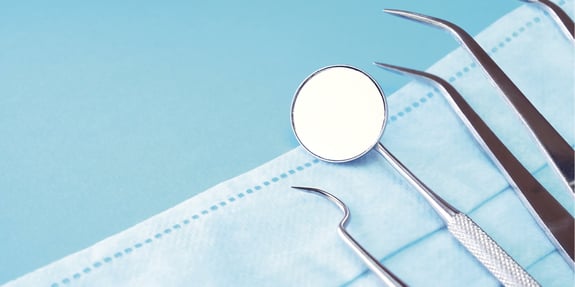Instrument marking tape is often used to help organize and identify instruments as they are moved between sterile processing and various departments. This color-coded tape assists the sterile processing technician in identifying surgical instrumentation to facilitate their separation and assembly and determine to which set or tray a given instrument belongs. The best marking methods for a facility will depend on the complexity of its surgical program, the number of sets in each specialty’s inventory, the type of instrument and sterilization used, and the sterile processing technician’s skills. The news article answers the question, can instrument marking tape be used on autoclaved instruments?
Yes, instruments that are autoclaved may be marked with an instrument marking tape. The tape manufacturer's technical data verifying the sterilization testing performed should be obtained and kept on file. Keep in mind that not all instrument marking tapes have been validated for use with all the different sterilization methods in use today. Only use tape validated for the sterilization process the instrument will be subjected to.
The tape manufacturer’s instructions for use should be checked regarding which sterilant can penetrate the tape (not all types of tape can be used for all sterilization methods). The tape should not be wrapped more than one-and-one-half times around an area and placed in an area that will not contact the patient and will not interfere with the surgeon. The tape must not be stretched when it is applied; it must lie flat with no gaps or wrinkles. The tape must be cleaned off and replaced as soon as it begins to peel or chip. All tape and adhesive residues should be completely removed, and the instrument washed before it is re-taped. A sharp object (e.g., a knife blade) should never be used to remove tape; not only will the instrument’s finish be damaged, but personnel can be injured. Chemical tape-remover products are available. Taped instruments should be checked each time the instrument is processed, and tape changes should be documented.
Overall, many brands of instrument marking tape can be safely used in the instrument sterilization process. This color-coding can create efficiencies in your facility’s sterilization processes by assisting in the identification of instruments for proper set or tray placements. The tape can also assist in easily identifying which instrument belongs to which department or which surgeon.
If you have any further questions, please feel free to submit them to standards@quada.org.
Since 1980, QUAD A (a non-profit, physician-founded and led global accreditation organization) has worked with thousands of healthcare facilities to standardize and improve the quality of healthcare they provide – believing that patient safety should always come first.


